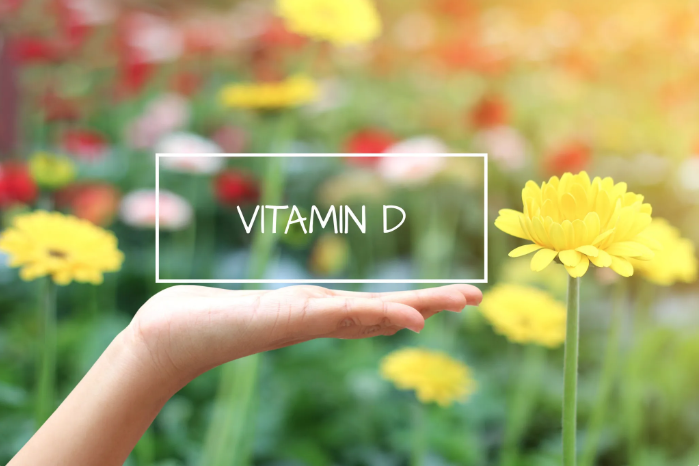Could you have a vitamin D deficiency?
As the days grow shorter and we spend more time indoors, it's important to consider whether our vitamin D levels are sufficient. Despite Australia's sunny climate, vitamin D deficiency remains prevalent, particularly during the winter months when deficiency rates can reach up to 50% in the southern states.
Vitamin D plays a crucial role in our health, and insufficient levels have been linked to various conditions, including cardiovascular disease, cancer, diabetes, osteoporosis, and autoimmune disorders. Maintaining optimal vitamin D levels is essential for overall well-being.
The Role of Vitamin D in the Body
Vitamin D is a fat-soluble vitamin that has important functions in the body, including:
Aids calcium absorption;
Maintains calcium and phosphate levels in the blood;
Important for strong, healthy bones and preventing osteoporosis, rickets, and bone fractures;
Regulates cell growth and neuromuscular function; and
Strengthens the immune system, enabling it to fight pathogens and prevent autoimmunity.
Sources of Vitamin D
There are three primary ways to obtain vitamin D:
Sunlight Exposure
Whole food
Supplements
Sun Exposure
The most effective of all of these methods is regular exposure to sunlight. The location, time of year, skin pigmentation, age, pollution levels, and application of sunscreen will all impact the amount of vitamin D absorbed and, therefore, the amount of exposure required.
People often think that we don’t have to worry about vitamin D levels in Australia, but this is not true. We are spending more time indoors than ever before, and when we do go out, we apply sunscreen, which reduces our ability to absorb vitamin D.
Whole Foods
Unfortunately, there are not many foods that are naturally rich in vitamin D. The best food sources are egg yolks, oily fish such as salmon and sardines, liver, and grass-fed cheese and butter. Some mushrooms that are exposed to UV light contain vitamin D, such as shiitake and chanterelle. Mushrooms and fortified foods provide vitamin D2, whereas animal sources provide vitamin D3. Vitamin D3 is more effective at raising blood levels.
Milk is often fortified with vitamin D; however, the body does not absorb individual nutrients added to processed foods as efficiently as nutrients naturally occurring in whole foods. Whole foods contain a range of synergistic nutrients that work together to enhance their bioavailability and utilisation in our bodies.
Low-fat or fat-free milk poses an extra level of complexity. During processing to remove the fat, the fat-soluble vitamins are lost. Although vitamin D may be added back to the milk, our bodies cannot absorb it without fat as a transport vehicle or utilise it optimally without the assistance of vitamin K (another fat-soluble vitamin).
If you consume milk, choose full-fat and ensure that it comes from pasture-raised, organic, grass-fed cows that have ample access to the outdoors and sunlight, as their milk may contain vitamin D even if non-fortified.
Good digestive function is critical to avoiding nutritional deficiencies. If your fat digestion is compromised, you won’t be able to absorb and utilise vitamin D properly. Signs of poor fat digestion can include:
Light or clay coloured stools;
Stools that float;
Greasy or shiny stools;
Pain between the shoulder blades;
Stomach upset by greasy foods;
Dry skin, itchy feet, and/or skin peels on the feet;
Gallbladder attacks or gallbladder removed;
A bitter taste in the mouth after meals, and
Pain under the right side of the rib cage.
A functional nutritionist will be able to help you improve your digestive function.
Supplements
If you have an established deficiency, you may require supplementation with vitamin D to restore your levels. Consult your health practitioner before considering the use of a vitamin D supplement, especially if you have underlying health conditions or are pregnant or breastfeeding. Please note that not all vitamin D supplements are equal in terms of quality/effectiveness.
In summary, the best way to boost your vitamin D is to regularly spend time outdoors in the sun and eat vitamin D-rich foods. However, many people don’t get enough vitamin D through sun exposure and their diet, so supplementation may be required.
If you have an autoimmune illness or other underlying health condition, you may like to consider being tested to determine whether a vitamin D deficiency could be a contributing factor.
References
Albahrani, A.A. and Greaves, R.F. (2016) Fat-Soluble Vitamins: Clinical Indications and Current Challenges for Chromatographic Measurement. Clin Biochem Rev.
Australian Bureau of Statistics: Biomedical Results for Nutrients (2013). Retrieved from link
Elmhurst. (no date). Dangers of Food Fortification and Enrichment. Retrieved from link
Glendenning, P., et al. (2012). Calculated free and bioavailable vitamin D metabolite concentrations in vitamin D-deficient hip fracture patients after supplementation with cholecalciferol and ergocalciferol. Retrieved from link
Kresser, C. (2019). Vitamin D: More Is Not Always Better. Retrieved from link
Lips, P. (2006). Vitamin D Physiology. Progress in Biophysics and Molecular Biology. Retrieved from link
Morris, H.A. (2005). Vitamin D: a Hormone for All Seasons--How Much Is Enough? Retrieved from link
Mayo Clinic. (2017), Vitamin D. Retrieved from link
Myers. A. (2020). What You Need to Know About Vitamin D and Its Impact on Your Immune System. Retrieved from link
Nohr, M. (2019). Vitamin D Deficiency: Common Symptoms and Solutions. Retrieved from link
The World's Healthiest Foods. (no date). Vitamin D. Retrieved from link
Weatherby, D. (2004). Signs and symptoms analysis from a functional perspective – a question by question guide. Jacksonville, OR: Bear Mountain Publishing.



